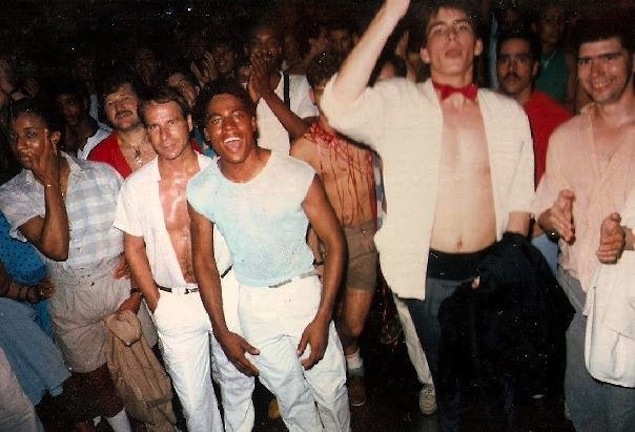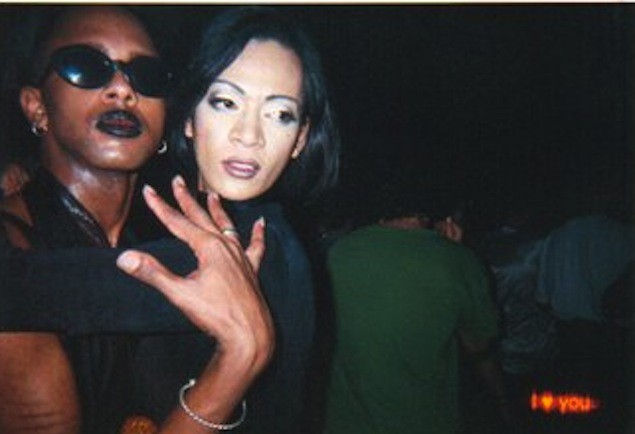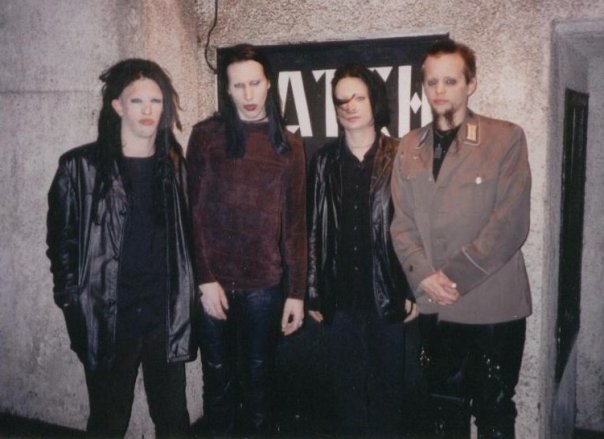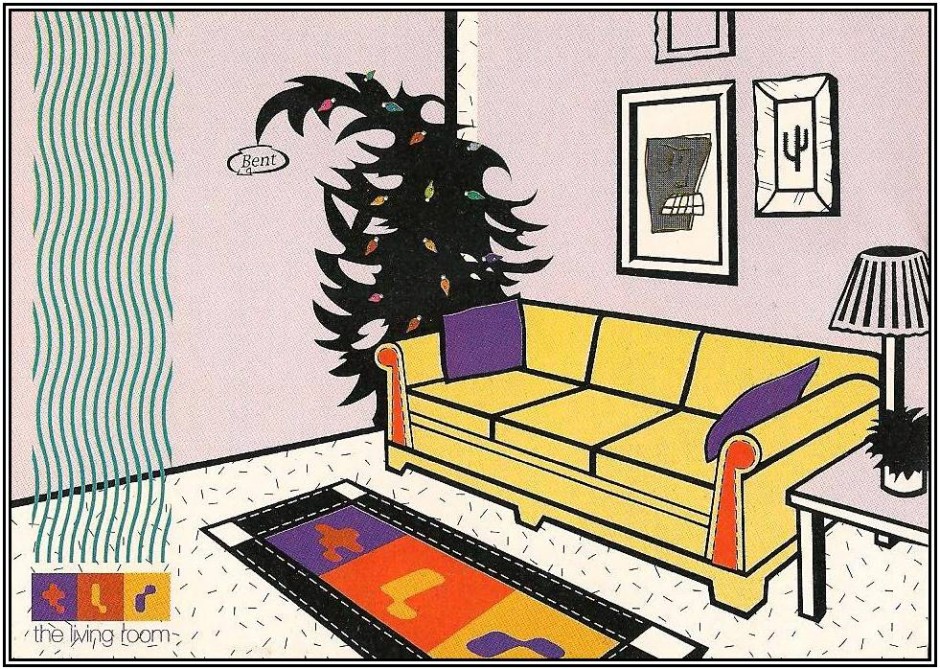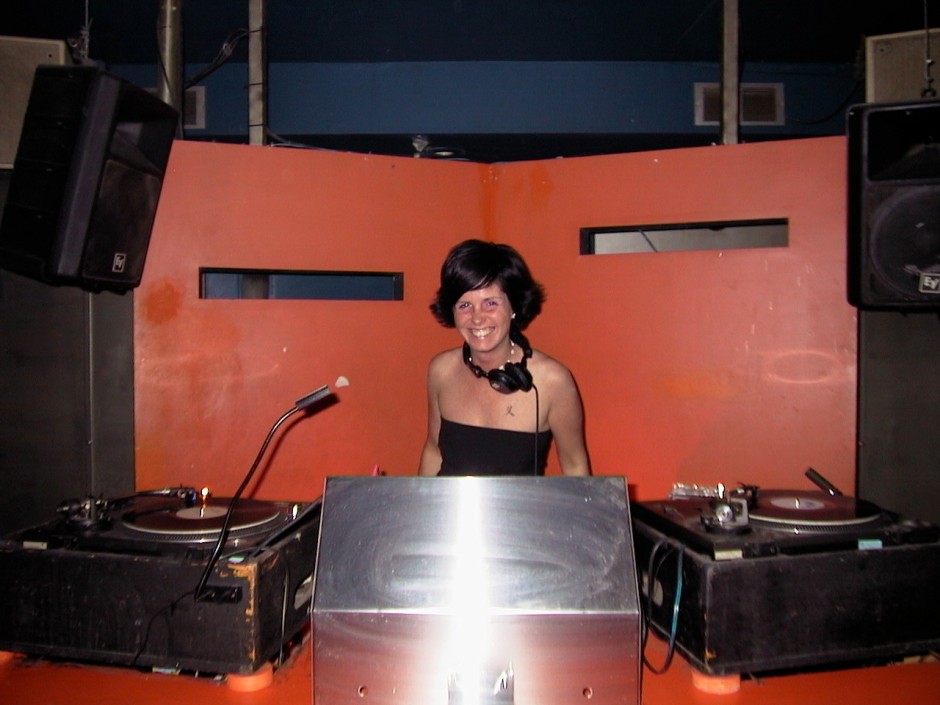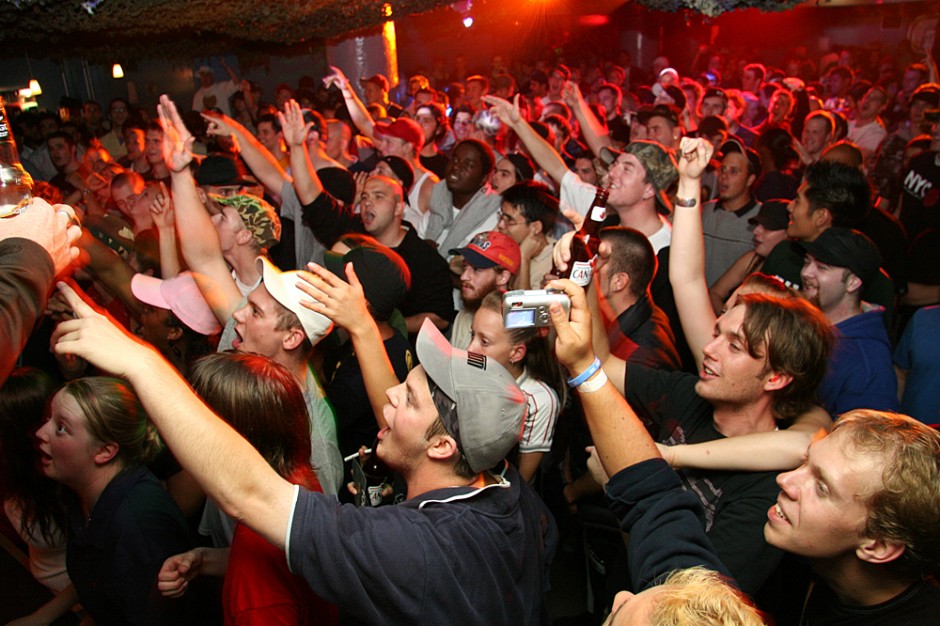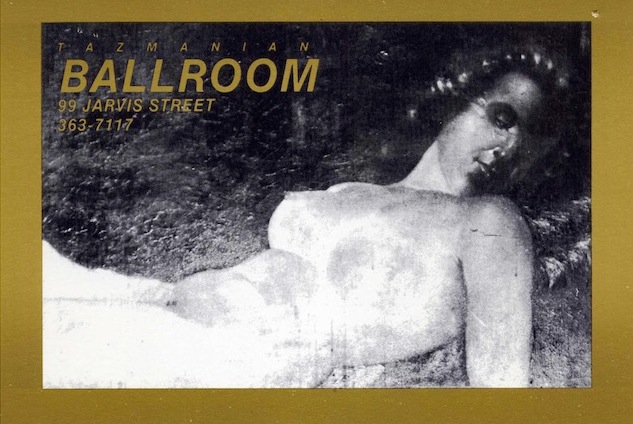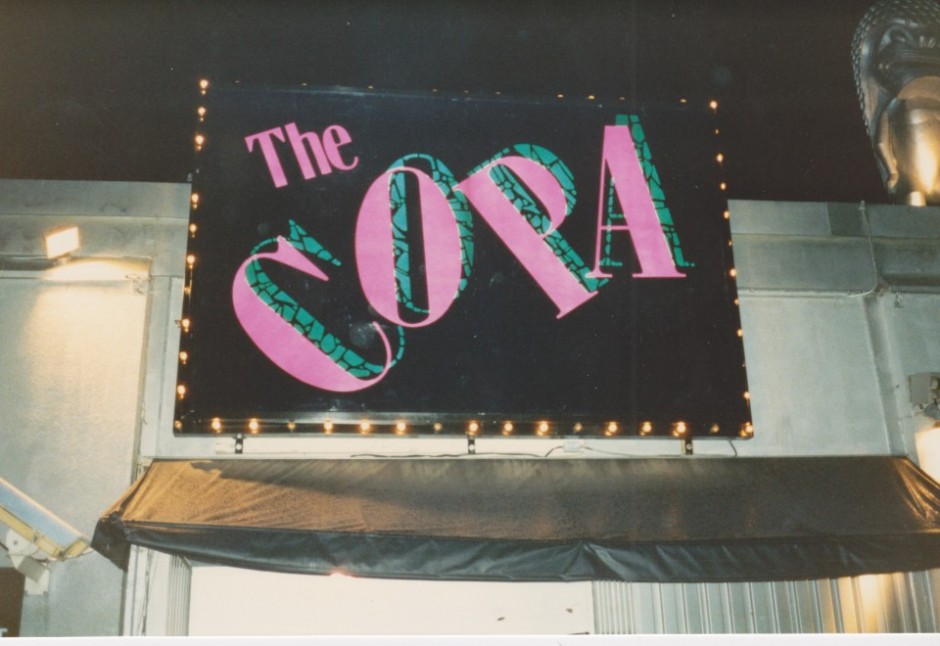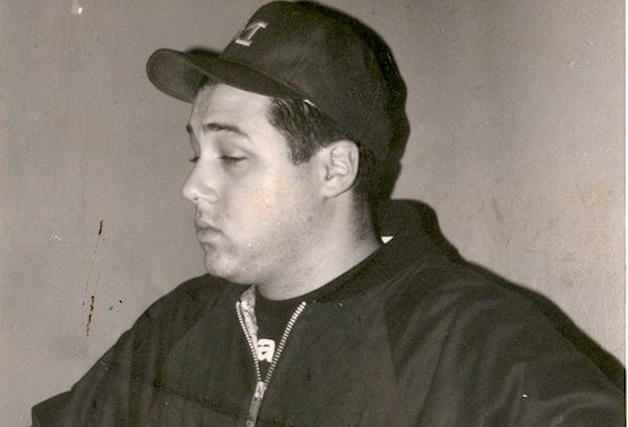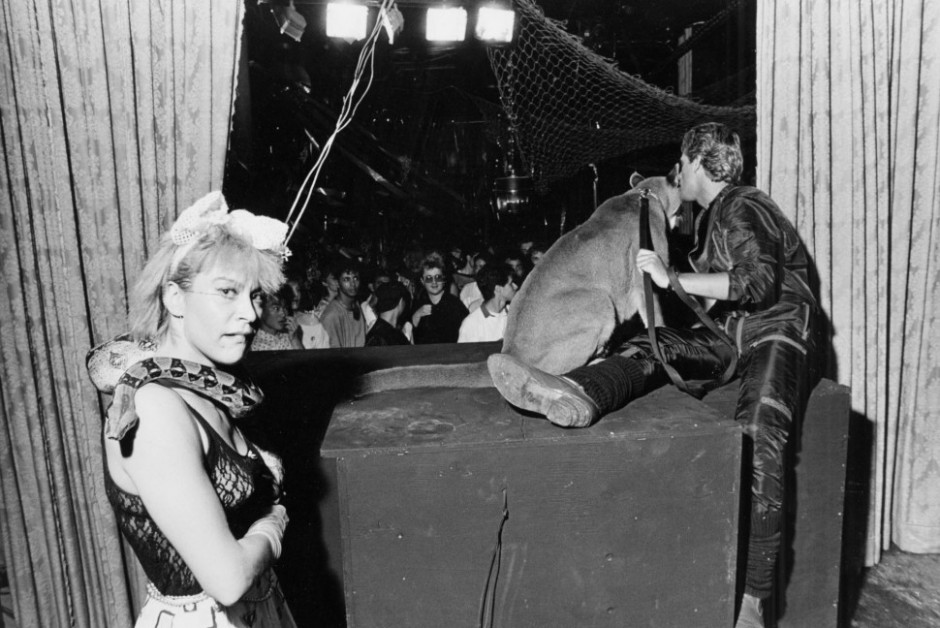Crowd at Komrads. Photo courtesy of Shawn Riker.
Article originally published June 21, 2012 by The Grid online (TheGridTO.com).
In this edition of her nightlife-history series, Denise Benson takes us back to the after-hours nightclub that helped mobilize Toronto’s gay-rights movement in the 1980s.
BY: DENISE BENSON
Club: Komrads, 1 Isabella St.
Years in operation: 1985-1991
History: In 1980s’ Toronto, street corners and dance clubs still served as essential meeting spots for gays and other marginalized communities. The stretch of Isabella closest to Yonge called out to many, especially after dark.
On the outer edges of the Church and Wellesley-centred gay village, the corner was close to popular homo haunts including Yonge Street’s St. Charles Tavern, Trax, and the Parkside Tavern, with gay dance club Stages above it. Nearby bathhouses were plentiful, Queen’s Park was still a major pick-up spot, and easy bar-hopping meant that gay men had lots of options even in those pre-Grindr days.
“The Yonge and Isabella area was really amazingly gay,” recalls event producer Maxwell Blandford, once a key figure in adventuresome Toronto clubs and now based in Miami. “Many bars, along with stores like Northbound Leather, were within a couple of blocks and infused thousands of gay people into that corridor.

